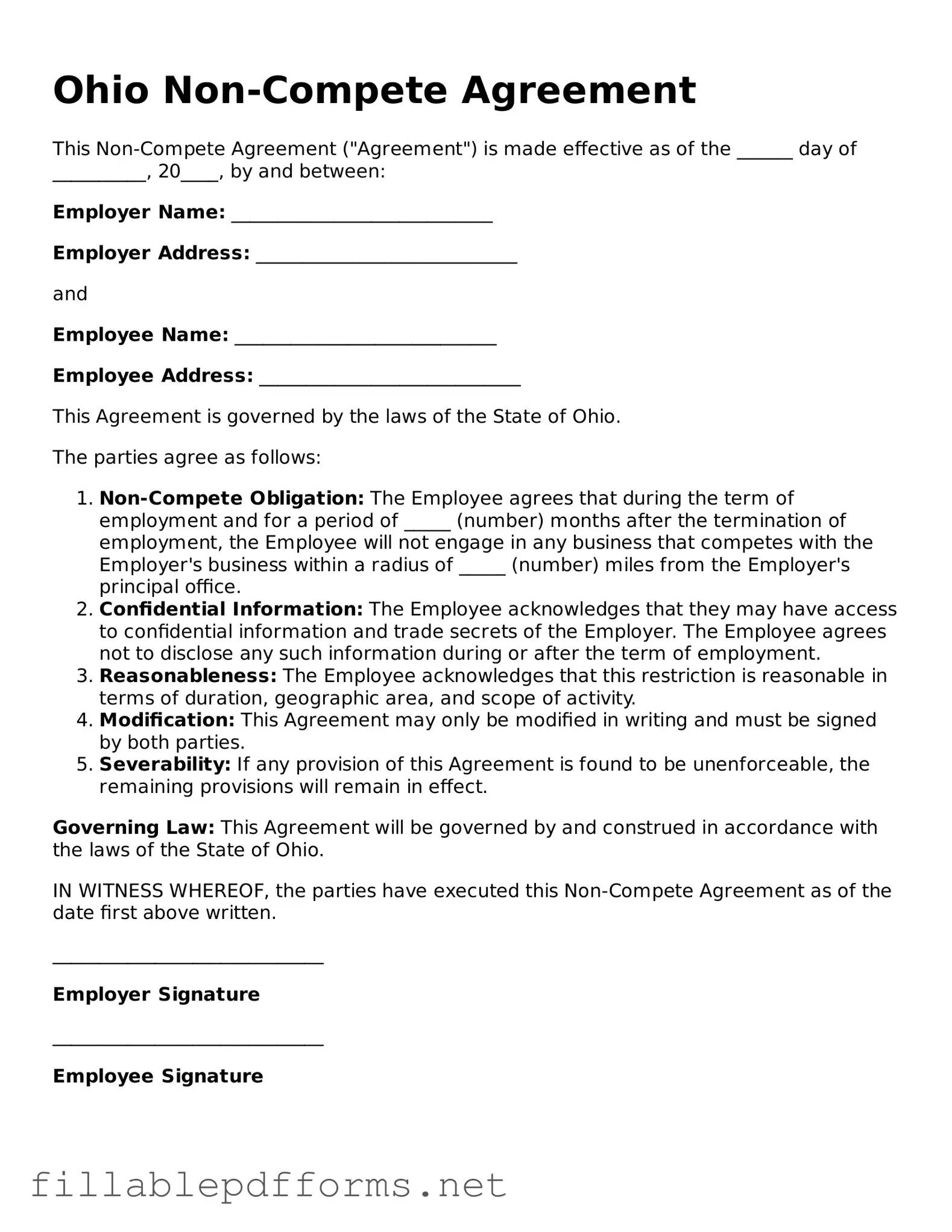The Ohio Non-compete Agreement form is a crucial legal document that outlines the terms under which an employee agrees not to engage in competitive activities after leaving their job. This form serves multiple purposes, primarily protecting the interests of employers by restricting employees from sharing sensitive information or leveraging company trade secrets for personal gain. Key elements of the agreement typically include the duration of the non-compete period, the geographical scope of the restrictions, and the specific activities that are prohibited. Employers must ensure that the terms are reasonable and enforceable under Ohio law, as overly broad agreements may be challenged in court. Additionally, employees should understand their rights and the implications of signing such an agreement, as it can significantly impact their future employment opportunities. By clearly defining expectations and limitations, the Ohio Non-compete Agreement form aims to foster a fair balance between protecting business interests and allowing individuals the freedom to pursue their careers.
